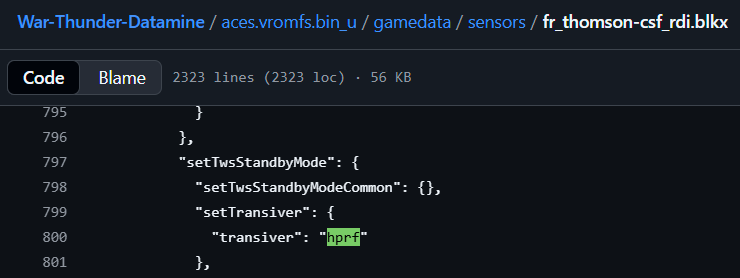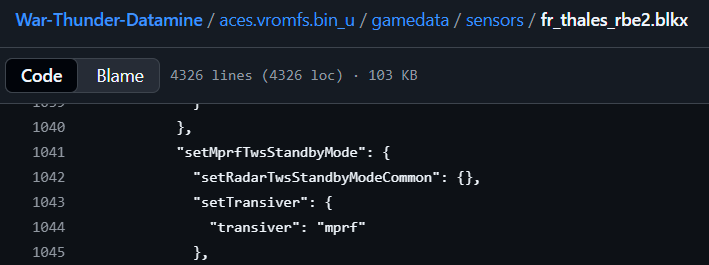Not many specifics have been publicly released, they seem to be keeping performance fairly hush hush for the most part. Raven ES-05 is related to CAPTOR-E and has a mass of 215 kg, so I guess that can act as a rough ballpark.
i dont think it is. here’s a irbis e trial with it searching ±60 degrees (max electronic steering without mechanical). while ± 60 isn’t the most insane search mode, it’s still pretty damn comptetent
Spoiler
Official site of the producer says Irbis is able to locate targets with RCS of 3 m at distance between 350-400 km. Therefore it is safe to assume target in this video is 1 m or around that.
https://youtu.be/cieLN4_tn0A
Still only 200-250km and not 400+
that’s because target rcs matters. i added a note in spoiler
No offence. I dont entirely trust “Russian official figures” Especially if its a third party and not the manufactorer
Doesnt seem to be any context as to what the target actually is. Could be a small airliner for all we know
I guess my point was if you’re going to declare it the best we need to set out what criteria we are using for “the best” before there can be any informed debate. For example if we’re only interested in maximum detection range then the AN/AWG-9 has both CAPTOR-M and N011 beat, but I doubt anyone would seriously argue it is the best mechanically scanned radar ever made (though for its time it almost certainly was).
i mean it’s literally from the brochure of the radar.

really? max range of detected targets of n011 is 400 km (160-200 km is for tracking) so i didn’t include it. can awg 9 really track from that far out?
Which again, from what I’ve read requires the radar to be in a narrower mode. I beleive it can do that, but from what I read ( granted just some light googling) when in a wide mode, which is probably more practical for anytime where you dont implicitly know where the target already is, thats more like 200km for the same sized target.
The video doesnt necessarily dispute that, as there was no context for what the target was it was detecting and it was within about 200-250km. Which would track with both statements.
Your post said “Maximum detection range” was 160 - 200 km for N011
I don’t see how searching in a narrower zone would make the radar somehow detect further (maybe i just dont understand)
whoops, lemme double check my source material
More focused/concentrated power. Think wide flash light vs laser
At least thats my understanding
So how does Captor-M compare to last generation of mechanical AN/APG-68? What makes it supposedly so much better beyond just marketing claims?
It seems to me that on multiple occasions the Germans wanted to substitute an upgraded AN/APG-68 over Captor-M at multiple points throughout the program.
okay it said 400 km for airliner sized target. I’ll update my suggestion
That may have been due to more boring reasons like unit costs. I’m guessing APG units would be less by virtue of economies of scale.
RDI is using HPRF for its TWS mode since it doesn’t have an actual MPRF mode (more range, worse performance vs non-headon targets) while the RBE2-AA is using MPRF for its TWS mode (less range, better against targets of all attitudes)
Spoiler


Thats the issue, “the same mode” doesnt use the same PRF in-game, so its not an equal comparison. Switching to SRC PDV should let you lock them just fine across any WT map.
You could probs argue that the Rafale is “missing” the ability for HPRF TWS, but at that point you’re just asking for gaijin to complicate your radar for no actual real gain in-game, since the largest maps are 130x130km, and you shouldn’t be engaging non-cooperative targets with the MICA beyond ~40km in-game anyways.
I had the same issue when you asked about CAPTOR-E. Kept giving me CAPTOR-M stats.
That’s great, but it still doesn’t explain the 90km hard limit on the radar screen there (and it’s not just here for decoration)
OK I got confused, I meant RDY, not RDI
I would have to read up on the AN/APG-68 to answer that, it is not a radar I have any familiarity with.
The Germans never had any interest in AN/APG-68; they wanted MSD2000 which was developed from the AN/APG-65. Their reasons for wanting the MSD2000 were primarily related to them perceiving it as lower risk, since it was developed from the proven AN/APG-65 rather than Blue Vixen, which was still in development trials at the time (as ever Germany was broke and terrified of cost overruns). They also stood to financially benefit from the choice of MSD2000 as it would enable them to secure a better deal on their purchase of APG-65 radars for the F-4F ICE programme.
Every other nation in the Eurofighter programme outright rejected the MSD2000 though because it had a whole laundry list of problems and failed to meet several of the key design requirements the nations had agreed on. Germany also tried to suggest everyone purchased the APG-65 as an interim radar then developed a better radar later on when Germany’s finances were in a better place but they got told that was a non-starter (if the other nations found an improved APG-65 unacceptable you can image what they thought of the base version).